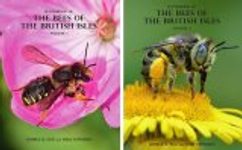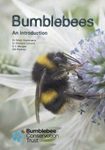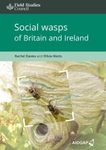![The Asian Hornet The Asian Hornet]()
Click to have a closer look
About this book
Contents
Customer reviews
Related titles
About this book
The accidental introduction of the Asian hornet or more accurately the yellow-legged hornet into France and South Korea over ten years ago and its subsequent spread to neighbouring countries has been worrying both governments and beekeepers alike. Many people are now seeking more information on this new threat to honey bees. Hornet biology is very different to that of honey bees and this can lead to misunderstandings and false assumptions. So, The Asian Hornet is aimed at anyone wanting to learn more about hornets, why the Asian hornet possesses such a threat, and what you can do about it.
While the natural history of hornets makes their eradication impossible, it is important that all interested parties are well informed about their biology and potential impact. The Asian hornet will continue to expand its range into new countries irrespective of the measures taken, so education is the best way to lessen their impact.
The Asian Hornet aims to cover all the key aspects of the hornets' biology including the impact they have on both people and honey bees. The information presented is gained from various sources during the many years I studied hornets in Asia (mainly Japan), and more recently via the ever-expanding scientic literature on the spread and impact of the Asian hornet both in France and South Korea.
Contents
Preface
My first encounter with hornets
1. General Introduction to Hornets & Yellow-Jackets
Hornets & wasps, so what is the difference?
Hornets and yellow-jackets of the world
Hornets and yellow-jackets of Europe
2. Hornet & Yellow-Jacket Invasions
Accidental introductions of wasps and hornets around the world
What traits helps wasps to invade
The Asian hornet and its European cousins
The Asian hornets’ arrival in France and subsequent spread
The Asian hornets’ arrival in the UK
Was the Asian hornet eradicated from the UK?
The Asian hornets’ arrival in South Korea and subsequent spread
3. Hornet Life Cycle
Introduction
Hibernation (Oct/Nov to April)
Post-hibernation migrations
The embryo nest (April/May-June), solitary period
Protection of the embryo nest from ants
Queen usurpation
Cooperative period (June)
The worker nest (June-August) or polyethnic period
Colony relocation
Reproductive phase (September-October)
Mating
Colony decline phase (October-November)
Nest Thermoregulation
Diet
4. Hornet Preditors & Pests
Predators of Hornets
Internal parasites of Hornets
5. Hornets as Pests, Food & Control Methods
Introduction
Hornets attacking Eastern honey bees
Hornets attacking Western honey bees
Hornets as stinging insects
Hornets as pests of fruit crops
Hornets as food for humans
Hornet control methods
Protecting your honey bee colonies
The future
MORE INFORMATION
Further reading (books)
Further reading (scientific papers)
Customer Reviews


































